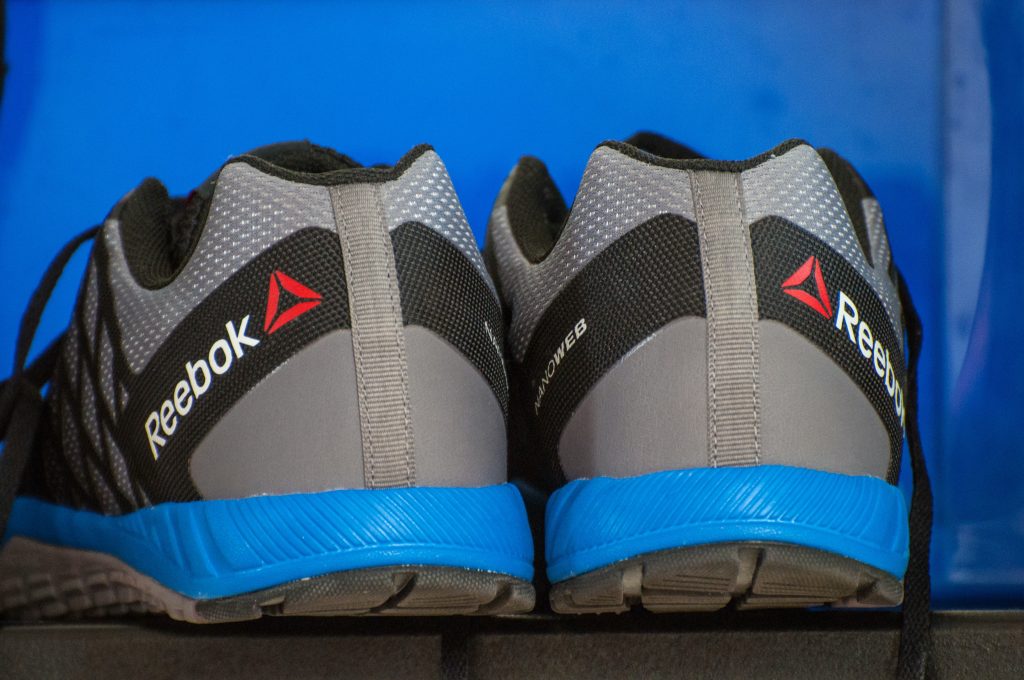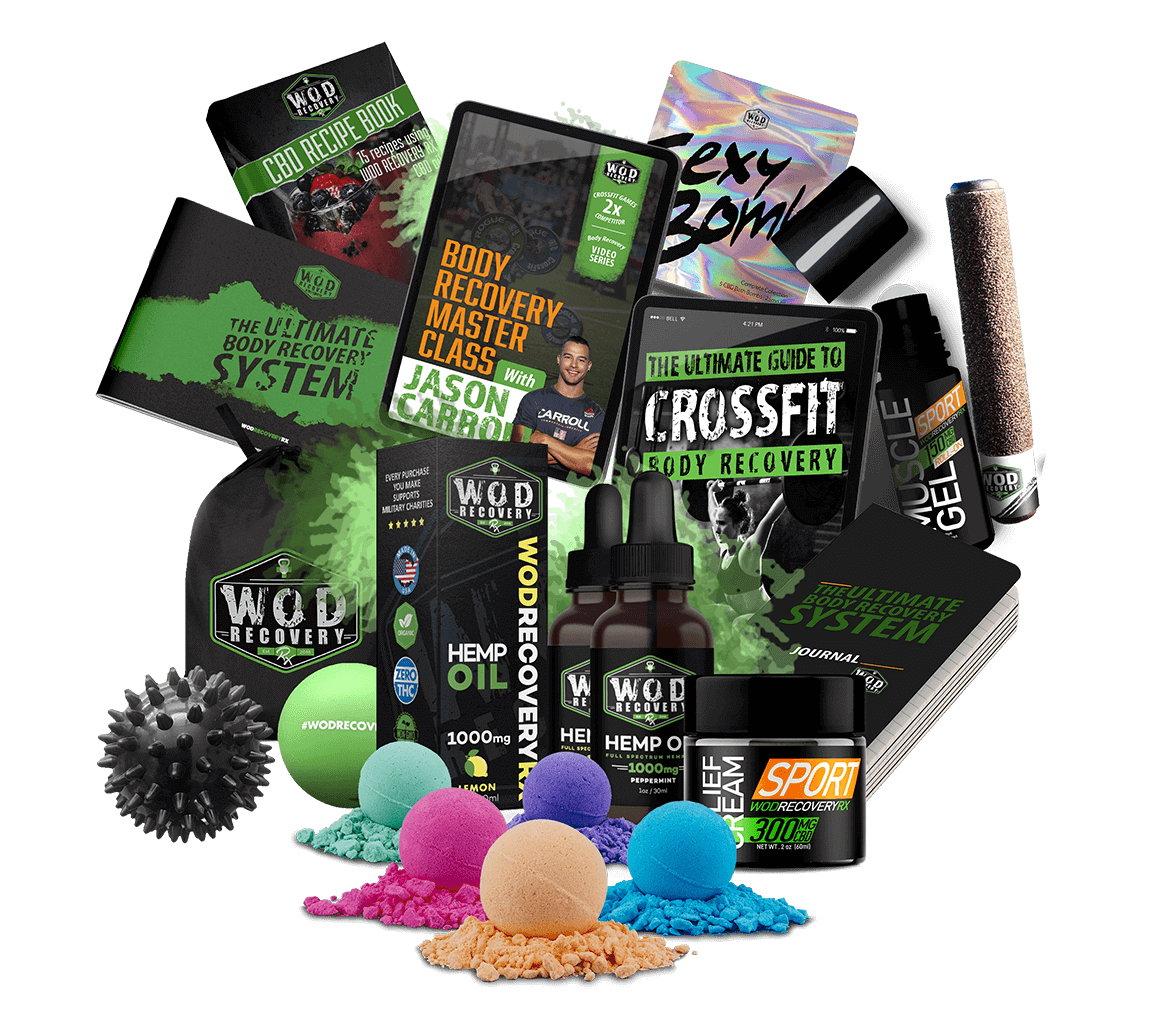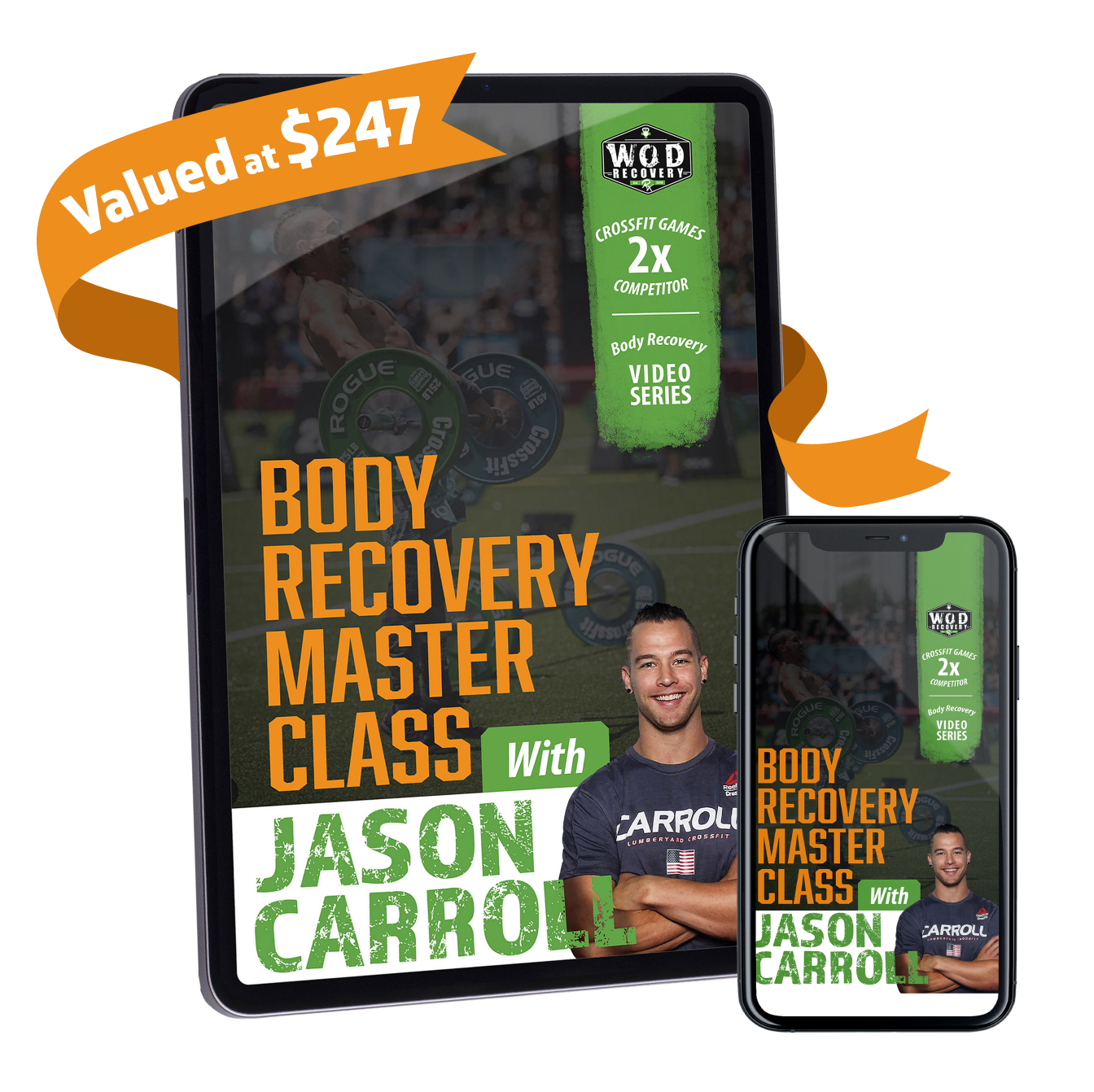WHY CROSSFITTERS LOVE THEIR SHOES
When you first started CrossFit, what type of shoes did you wear to the Box?
Odds are old, beaten-down runners. Maybe you still wear old, beaten-down runners. You never put a lot of thought into what went onto your feet because, after all, shoes are shoes.
But all of the veterans at your CrossFit gym had more of a personal relationship with what protected their feet during a workout.
Depending on what the WOD was for that particular lift, they wore a variety of shoes. Runners, flat-soled, minimalist, ones with individual toe-slots.
More importantly, you noticed that the veteran CrossFitters seemed to really, really love their workout shoes.
You would watch them adoringly wiping smudges off of them proudly mentioning how great their new pair were. A few times, you even caught a fellow box-goer whispering sweet nothings to their sneakers.
Hmm, you thought, maybe there is more to what I wear on my feet that I thought.
It makes sense, after all.
People have specific shoes for running, business, nursing, basketball, football, soccer, bowling, curling, and basically anything else you can possibly think of.
The list goes on and on, and what all these types of shoes have in common is that they give a physical advantage in the area they are built for.
For sport-specific shoes, that advantage is usually superior grip and ankle support, as well as a sole that puts the wearer’s weight into their toes for quicker reactions.
For nursing, the shoes are non-slip and comfortable enough for a nurse to go through a 12-hour shirt without feeling like they are standing on two nail-filled cinder blocks.
So why wouldn’t there be shoes that are specific to CrossFit? It only makes sense.
But what makes CrossFit so unique is that it ties together sports and weight training, and therefore requires a few different types of shoes.
Alright, that makes sense. Sport-specific shoes for CrossFit. But that still doesn’t explain why CrossFitters are so in love with their shoes, or why they growl at me whenever I touch someone else’s beloved pair.
Here are a few reasons CrossFitters love their shoes.
Versatility
CrossFit shoes, like the sport itself, are complex.
Within a CrossFit WOD you can have exercises that seemingly span across continents and weave amongst dimensions – skipping, followed by deadlifts, followed by running, followed by weighted carries.
All of these exercises fall under different categories of fitness and therefore require different ways of going about them.
So CrossFit shoes need to be like the people wearing them; versatile. They need to have ankle support for skipping, soles for heavyweight movements, and the springiness and lightness that make a good running shoe.
Any one of those things are easy to find in a shoe, but all three? Good luck finding those traits together outside of a CrossFit shoe.
Different Types Of CrossFit Shoes
Although CrossFit shoes do pride themselves on versatility, sometimes more specialized shoes are needed.
If a WOD is heavily skewed towards heavy squats and deadlifts, for instance, weightlifting shoes or powerlifting shoes are your best bet.
For every lift, there are specific shoes that are more useful than others.
Let’s break down the various types of shoes that CrossFitters may wear:
Sneakers
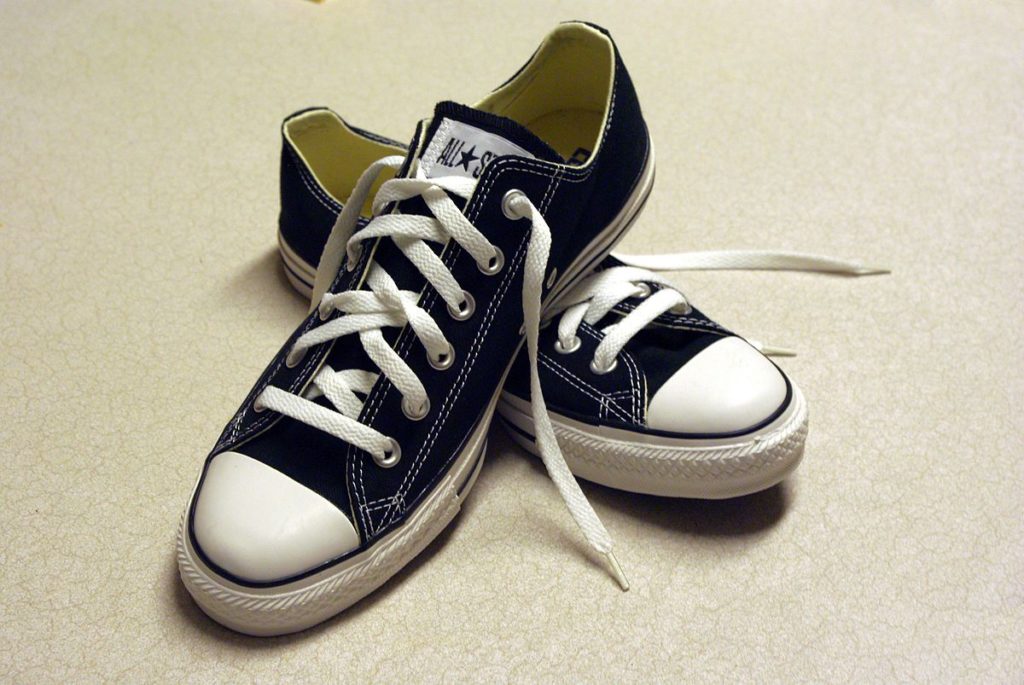
The athletic shoe minus the “athletic” part. Sneakers are made to look athletic and above all else, stylish. They actually have no real athletic traits to them, so wear at your own risk.
PROS: Look cool, especially with flames on the side or blinkers that light up when you walk.
CONS: Looking cool is about all they do. Not actually designed with athletics in mind, so not a lot of ankle support, stability, or performance-enhancing features.
Running Shoes
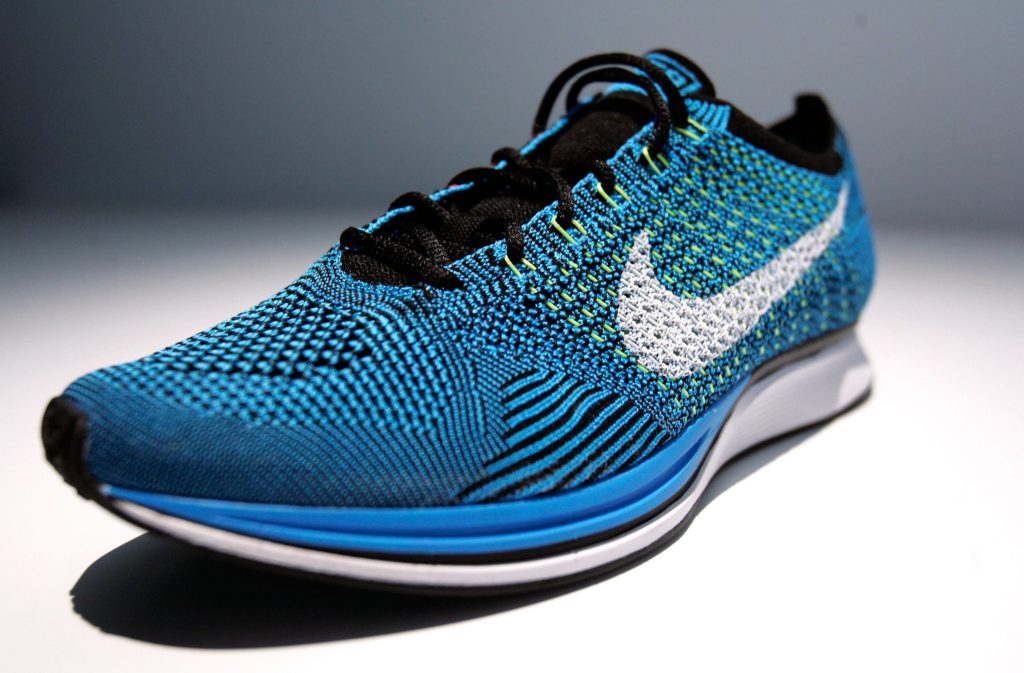
Running shoes are designed for long runs, and therefore have a lot of cushioning meant to protect the foot over spans of time. Their heels are usually well padded.
PROS: Comfortable to workout in, especially if the WOD requires a lot of running.
CONS: Running shoes are designed for, well, running. That means they constantly want to push you in a forward direction, and do so by having a higher heel than toe. This places the wearer’s weight on their toes, which causes them to constantly be falling a little forward.
This is not ideal for weight training movements such as the squat or deadlift, where you want your weight to be mostly going through your heel.
As well, running shoes lack lateral stability and ankle support, which means a higher risk of ankle injuries from lateral movements.
Basketball Shoes
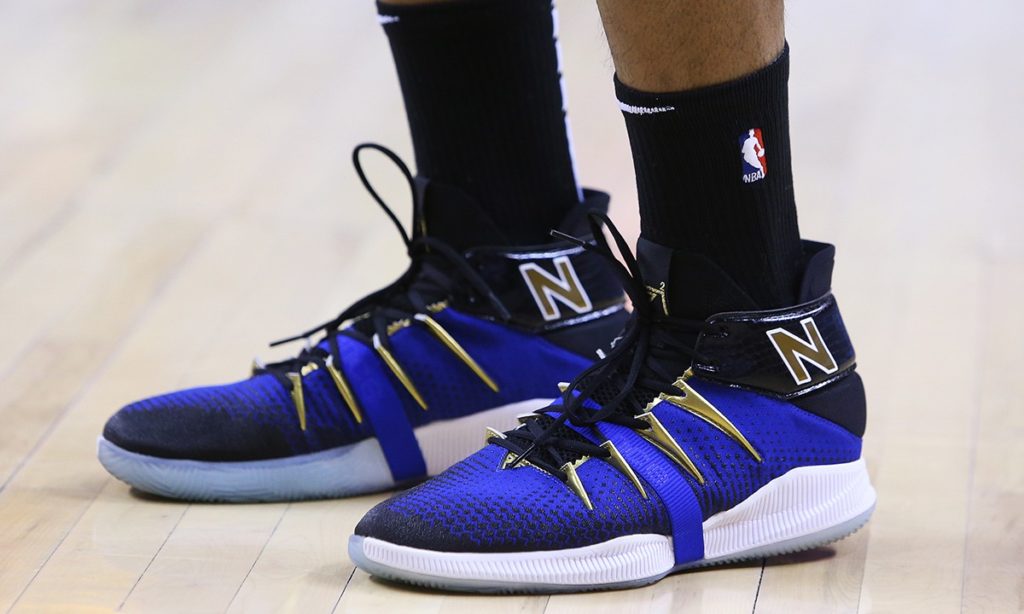
You’ll never guess what sport basketball shoes are meant for. We’ll wait a few seconds while you compose an answer…
Did you guess? Was your guess bowling?
If so, we’re sorry to tell you that you are wrong.
Basketball shoes were created for none other than the sport of basketball. It seemed too obvious of an answer, right?
These shoes are designed for traction due to the stop-and-start nature of basketball, as well as movement both horizontally and laterally.
PROS: Have a lot of ankle support, as well as good stability no matter which way you are moving.
CONS: Basketball shoes tend to be heavy. If you are on your feet and moving long distances in a workout, they may start to feel like a couple of 5-pound dumbbells taped to the bottom of your legs.
Crocs
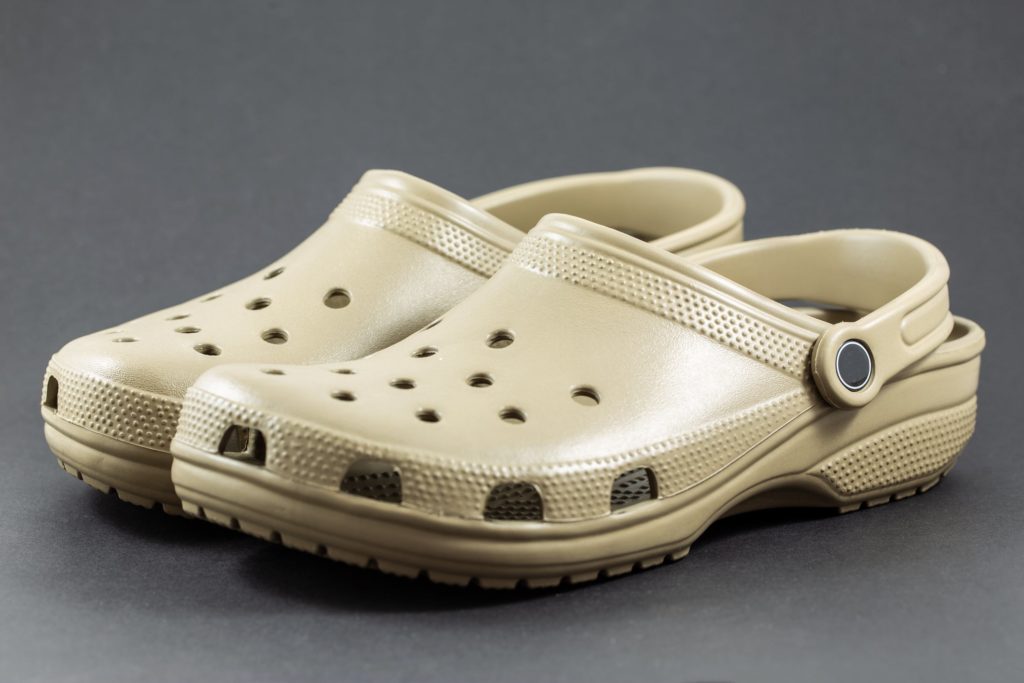
A few questions before we dive into this particular mess:
Are you 6?
Are you younger than 6?
If your answer to either of these questions is ‘no’, then please do not wear crocs to your WOD.
PROS: filled with holes for better airflow to your feet. A safety strap on the back so they will stay on no matter how intense your workout gets. Multiple exciting colors.
CONS: Where do we even begin?
Cross-Training Shoes
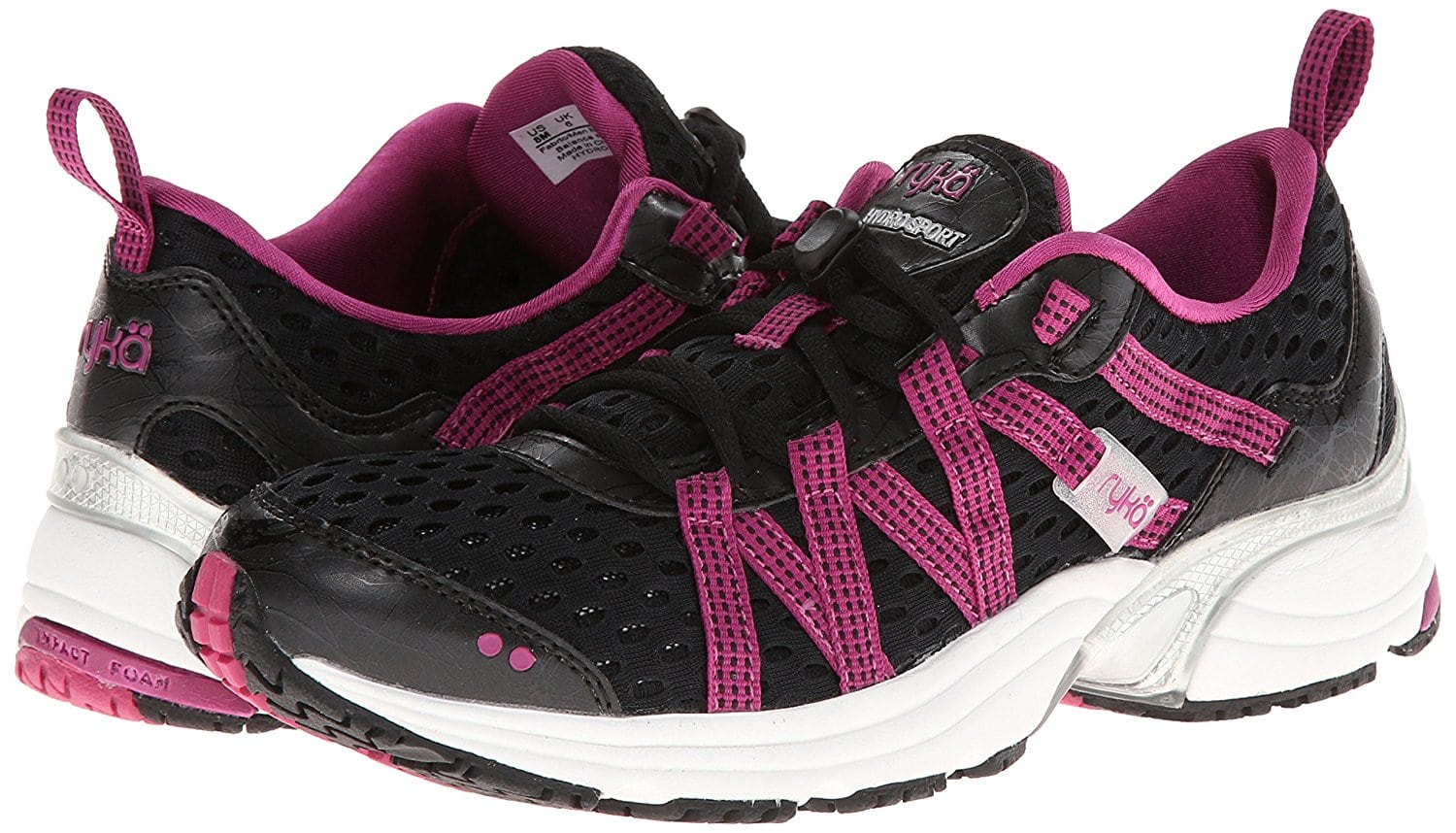
These shoes are designed for a variety of athletic movements: running, jumping, turning, and lifting, to name a few.
They’re like a blend between more specified shoes, just like how CrossFit is a blend between different types of athletics.
PROS: Can handle whatever you throw at them. Are highly recommended in the CrossFit world. You can run in them, you can lift in them, you can jump in them, you can probably even swim in them if you really wanted to.
CONS: The blend that makes them a strength can also be a weakness. They are great at no one thing. They do not provide the cushioning of a running shoe, the stability and power-production of a powerlifting shoe, or the ankle support of a basketball shoe.
CrossFit Shoes
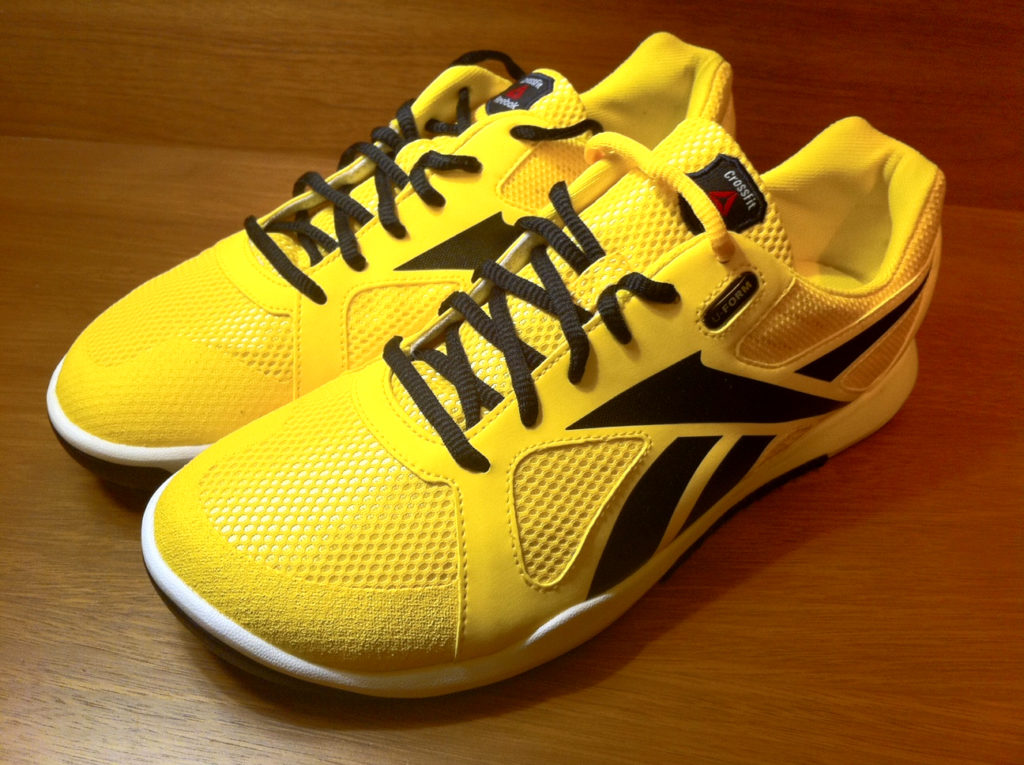
Even more specific for CrossFit than the cross-training shoe is, you guessed it, the CrossFit shoe.
It is designed with a WOD in mind, and therefore covers lifting, running, jumping, and whatever else you can dream up.
Where once they were nearly impossible to find, now CrossFit shoes are made by a variety of brands including Reebok and Nike, as well as smaller brands like NoBull.
PROS: Designed for CrossFit, this is a great shoe for your WOD. It covers a great range of motions and movements.
CONS: As they are part of a relatively niche market, CrossFit shoes tend to be quite expensive. Like the Cross-Trainer, CrossFit shoes are very general, and their lack of specialization means they are truly great in no one area.
Barefoot
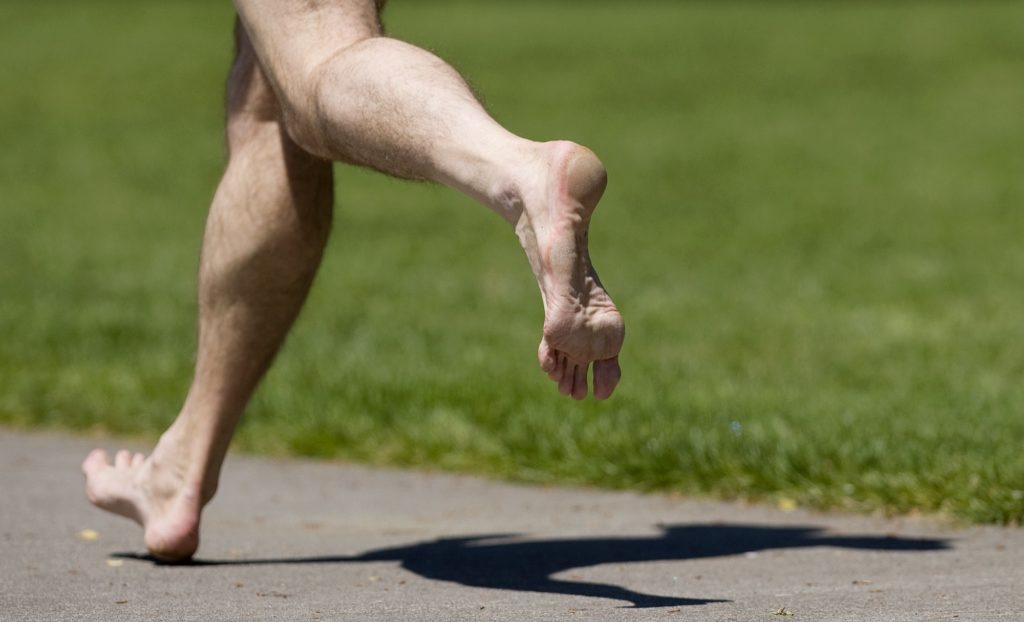
Believe it or not, some people swear by working out barefooted. While some CrossFit boxes may not appreciate this (sweaty feet all over the gym, YUCK), there is some merit behind the idea.
The human foot is designed to work without a shoe. The natural curvature of the foot and feel of your foot on the ground can give you better balance and reaction time. Without anything between the sole of your foot and the floor, you have a lower center of gravity and therefore are more stable.
PROS: More stable, better on the joints, a greater range of motion, and a more natural feel. Above everything else, you can’t beat the price of FREE!
CONS: WIthout ankle support and protection to the foot, there is a greater chance of injury. Especially with so many moving bodies and weights, a bare foot can be a dangerous target. If you head outside, there will be added time to take shoes on and off, and nobody wants to step on a jagged rock or piece of glass.
Minimalist Shoes
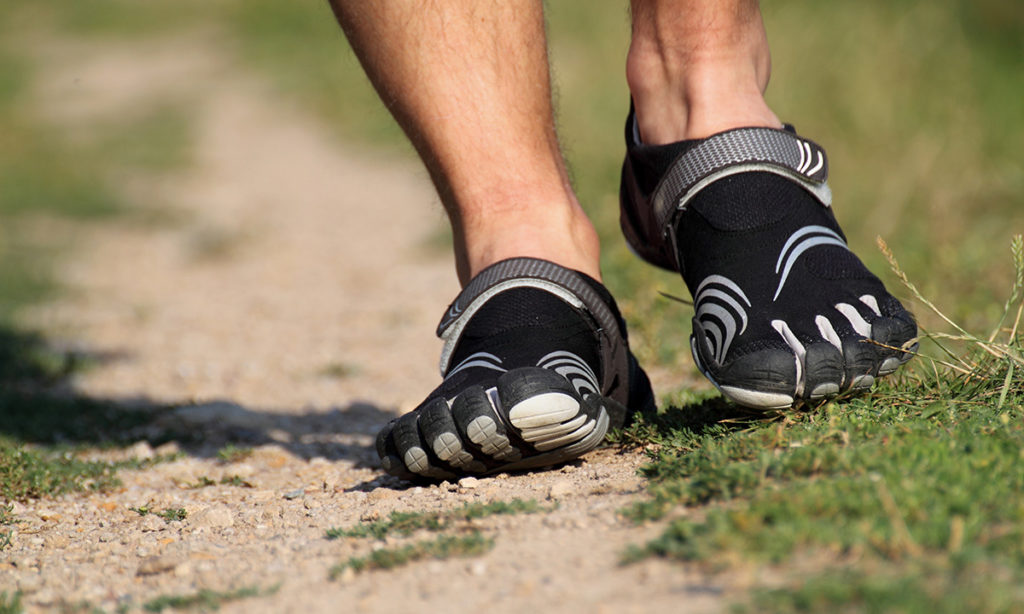
For the barefoot-minded person who doesn’t want (or isn’t allowed) to actually go barefoot.
Minimalist shoes are lightweight and designed to basically be a tiny shell around your foot. Your foot does the work, the minimalist shoe is just there.
PROS: Lightweight. They do offer slightly more stability than a naked foot.
CONS: There is not a lot of support to be found in the minimalist shoe. As well, long distances run on these may leave your feet feeling like a bag of very tired rocks.
Weightlifting Shoes
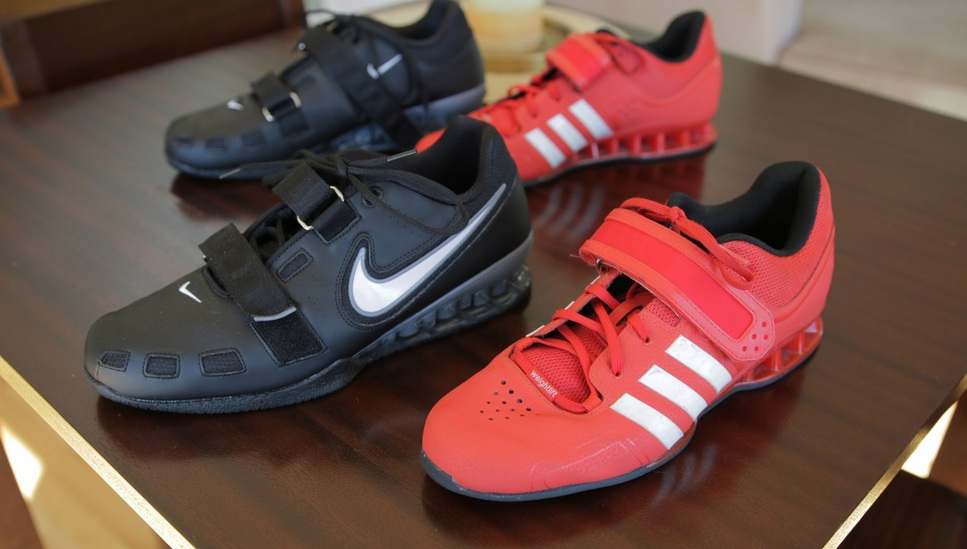
Weightlifting as a sport consists of the snatch and the clean and jerk. Both of these movements require a massive amount of force transferral, as well as a good amount of ankle mobility needed.
Have you ever tried jumping on a bed? They’re kind of the opposite of a trampoline. You can jump as hard as you want, you’re not going to get very high. Most shoes are a little bit like that.
They have cushioning in the heel that takes away a bit of our power transfer. Weightlifting shoes have no cushioning in the heel to allow for better transfer.
This is great for WODs that require lots of cleans or jerks, but not so awesome when you have to run a few miles in what amount to wooden clogs.
PROS: Great ankle mobility for force transfers and squat mechanics. No loss of force into cushioning, because that cushioning is nonexistent.
CONS: Clunky for running, jumping, and side-to-side movements.
Powerlifting Shoes
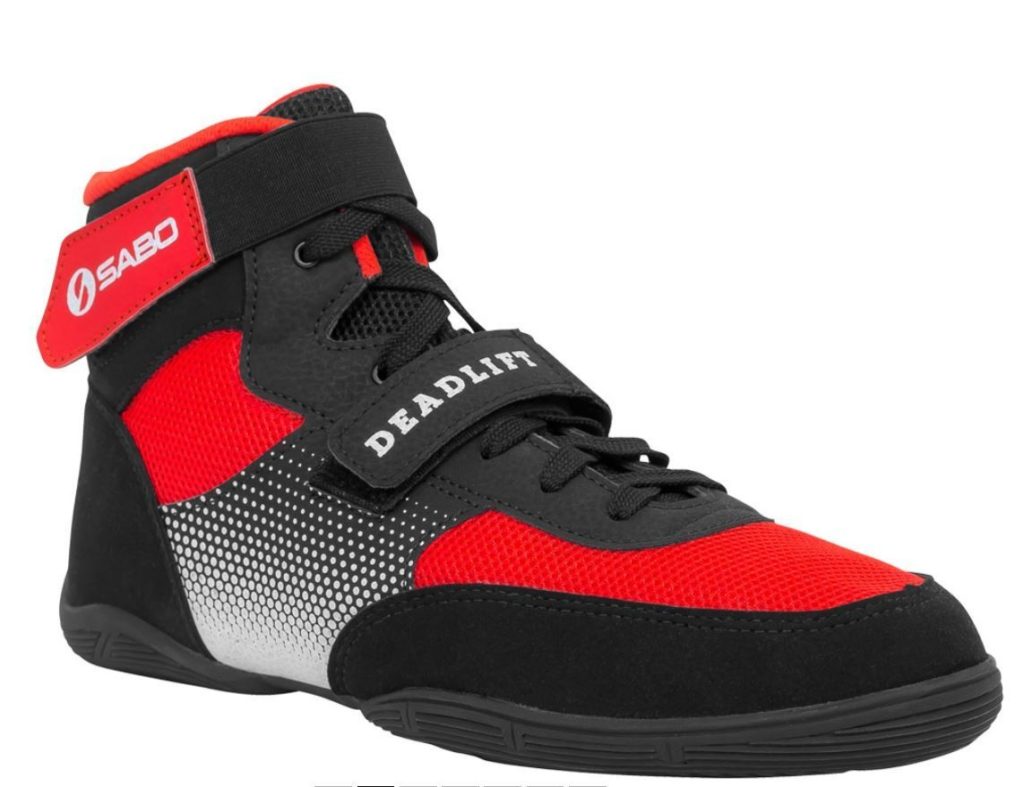
These are similar to weightlifting shoes, but not the same. In sporting terms, powerlifting covers the squat, bench press, and deadlift.
Similar to weightlifting shoes, these usually have no cushioning to get maximum power transfer in squats and deadlifts.
Oftentimes, good ol’ fashioned Chuck Taylors can be used as a great powerlifting shoe, due to their lack of cushioning and good stability.
PROS: No cushioning for a better transfer of power. Low to the ground for better stability.
CONS: Most WODs don’t consist of only powerlifting, and running 5 miles in flat, cushionless shoes can quickly become a living hell.
High Heels
Nothing like some 4-inch high heels for a workout, am I right?
PROS: Literally nothing.
CONS: Literally everything.
Style
No matter what type of shoes you end up picking, style points go a long way in the CrossFit world.
A big reason why CrossFitters love their shoes is because they love the look of them. As long as the shoe is doing its job, the cooler it looks, the better.
So ya, if CrossFit shoe makers could start making shoes with flames on the side so we get the performance boost of CrossFit shoes mixed with the pure awesomeness of flames, that would be great.
Community
The biggest reason CrossFitters love their shoes is that it gives us a sense of community.
We love the people we spend hour after grueling hour working out with, and we love to talk and laugh with them.
Shoes give us a talking point. They make us feel like part of one big family.
No matter what differences we have outside of the box, our shared love of our shoes is one of the things tying us together inside of it.
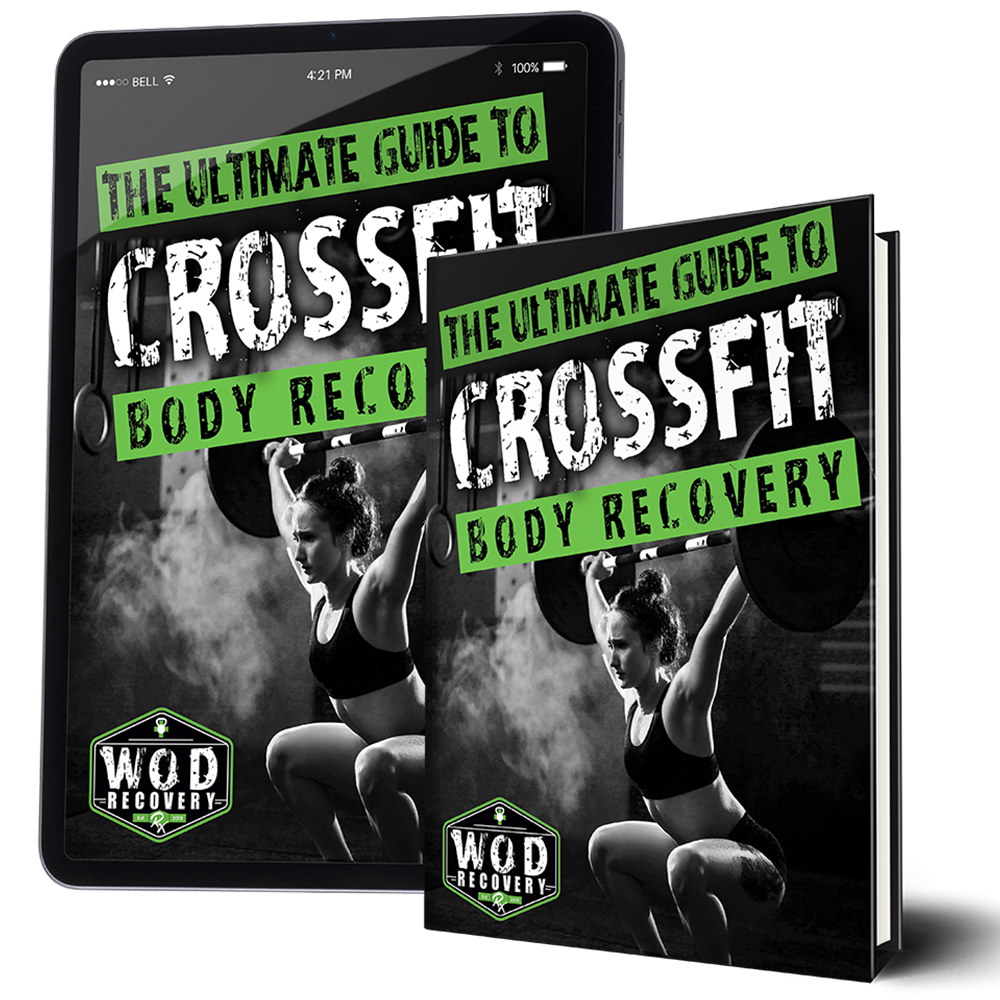
RX+ YOUR BODY RECOVERY TODAY!
Enter your information below to get this FREE report today!

WOD RECOVERY RX © 2020
428 Gaslamp, Inc.
Disclaimer:
All hemp-derived products
contain 0.0% THC
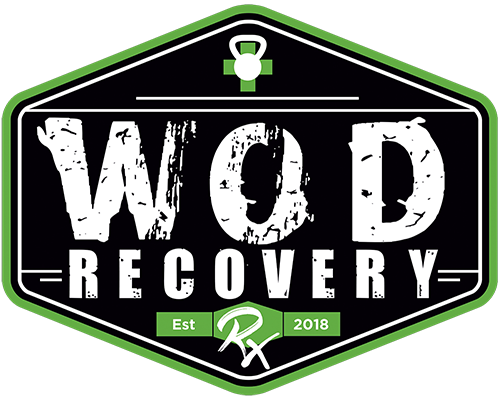
The statements made regarding these products have not been evaluated by the Food and Drug Administration. The efficacy of these products has not been confirmed by FDA-approved research. These products are not intended to diagnose, treat, cure or prevent any disease. All information presented here is not meant as a substitute for or alternative to information from health care practitioners. Please consult your health care professional about potential interactions or other possible complications before using any product. The Federal Food, Drug, and Cosmetic Act require this notice.

WOD RECOVERY © 2020 | 428 Gaslamp, Inc.
Disclaimer: All hemp-derived products contain 0.0% THC
The statements made regarding these products have not been evaluated by the Food and Drug Administration. The efficacy of these products has not been confirmed by FDA-approved research. These products are not intended to diagnose, treat, cure or prevent any disease. All information presented here is not meant as a substitute for or alternative to information from health care practitioners. Please consult your health care professional about potential interactions or other possible complications before using any product. The Federal Food, Drug, and Cosmetic Act require this notice.
